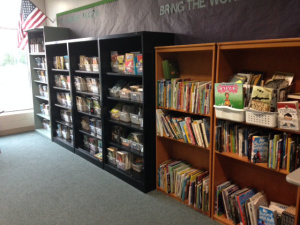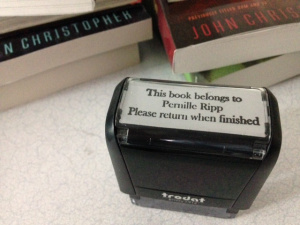Pernille Ripp's Blog, page 77
June 30, 2015
How Dare You Teach Our Students to Speak Up?!

I used to be afraid of what the next year’s teachers thought. Of how I would be judged. Of how they would roll their eyes when I spoke of the dreams I had for my students, of the voice I was trying to give them. Of how they questioned everything I did. I still remember the day I was told that I was not helping students, but hurting them instead, and how dared I tell students to question the every education we were providing.
And so I stopped. For a few days any way as I licked my wounds and cried at home. Because how I had become that teacher that instigated, disrupted, and told students that if their education was not working for them then they had to speak up. How had I become a teacher who told students to question?
But my students didn’t. They still questioned me, stopping me and asking what the purpose of something was, asking if they could do it in a different way, if they could change, break, create, or even skip. And in their fight for a better education I realized that no matter what the next year’s teachers had thought, I had to support that fight. That my students had the right to create a ruckus when the education being given to them was not working,
So instead of telling them to just speak up and question, I taught them to do it kindly but persistently. That there were ways they could ask their questions without being seen as dissenters. at all times That they had a right to ask and that they needed to involve themselves in the education that was happening to them. They had a right to an education that would work for them.
And within the courage of my students, I found my own courage. Reclaimed it and held my head up high again. Because the question should not have been why I dared to have students question their own education, but instead how I dared being an educator that didn’t… Where is your courage?
PS: In my district now this does not happen, next year’s teachers are some of the biggest supporters of student voice that I have ever met.
I am a passionate teacher in Oregon, Wisconsin, USA but originally from Denmark, who has taught 4th, 5th, and 7th grade. Proud techy geek, and mass consumer of incredible books. Creator of the Global Read Aloud Project , Co-founder of EdCamp MadWI , and believer in all children. The second edition of my first book “Passionate Learners – How to Engage and Empower Your Students” is available for pre-order now. Second book “Empowered Schools, Empowered Students – Creating Connected and Invested Learners” is out now from Corwin Press. Join our Passionate Learners community on Facebook and follow me on Twitter @PernilleRipp.
Filed under: aha moment, Be the change, being a teacher, ideas, Passion, student voice


June 29, 2015
Passionate Learners – My ISTE 2015 Ignite
On Sunday, I had the incredible privilege to give an Ignite speech at ISTE 2015. An Ignite is a 5 minute speech with 20 slides where they automatically advance every 20 seconds. I have never been to ISTE and I have never given one of these before, so I took a chance and spoke about what it means to break the rules a little…
Thank you to Anibal Pacheco for not only filming this but also posting it to YouTube.
If you are wondering how you can break the rules to create a classroom full of passionate learners, the 2nd edition of my book Passionate Learners is being released on September 22nd!
I am a passionate teacher in Oregon, Wisconsin, USA but originally from Denmark, who has taught 4th, 5th, and 7th grade. Proud techy geek, and mass consumer of incredible books. Creator of the Global Read Aloud Project , Co-founder of EdCamp MadWI , and believer in all children. The second edition of my first book “Passionate Learners – How to Engage and Empower Your Students” is available for pre-order now. Second book “Empowered Schools, Empowered Students – Creating Connected and Invested Learners” is out now from Corwin Press. Join our Passionate Learners community on Facebook and follow me on Twitter @PernilleRipp.
Filed under: being a teacher, being me


Before You Give Up On “Those” Teachers

We have all heard of them; those teachers. Those teachers with their negativity. Those teachers with their fixed mindset. Those teachers that don’t like children, that don’t like change, that will always, always be the one who says no. Those teachers are at every school, often with the strongest voices, often with the most power. And we cannot wait for them to quit.
Yet, before we give up on those teachers, before we push them out, write them off, and definitely talk behind their back, stop for just a minute. Because those teachers had a dream once. Those teachers came into this profession wanting to inspire, to change, to create. They didn’t come to be the naysayers or the ones that brought us down. They came into this profession wanting to be the very best teachers they could be. To reach every kid and truly make a difference. To be the type of teacher that kids don’t forget, that leave their door open,and that try to and try and try. And yet, along the way something happened. And that something changed them at their very core. Changed their dreams and their optimism. Changed them to become something they never thought thy would be.
And here’s the thing. We will never know what that something is for a person. We will never know how many times they stood up and fought until to be broken down. We will never know how many times they were told to find their place, stay quiet, and keep their dreams to themselves. We will never know what path they walked to take them where they are now.
So before you give up on those teachers take a moment and ask; why did you become a teacher? What was your dream? What happened and what can I do?
Because those teachers are just like us, they just got a little lost. They don’t need to be pushed out, they need to be re-found. So do your share, don’t give up, because just like we continue to find new ways to reach all students, we need to find ways to reach all teachers.
I am a passionate teacher in Oregon, Wisconsin, USA but originally from Denmark, who has taught 4th, 5th, and 7th grade. Proud techy geek, and mass consumer of incredible books. Creator of the Global Read Aloud Project , Co-founder of EdCamp MadWI , and believer in all children. The second edition of my first book “Passionate Learners – How to Engage and Empower Your Students” is available for pre-order now. Second book “Empowered Schools, Empowered Students – Creating Connected and Invested Learners” is out now from Corwin Press. Join our Passionate Learners community on Facebook and follow me on Twitter @PernilleRipp.
Filed under: being a teacher, Passion, teachers


Start Again

I could write about the incredible people I have met. I could write about how overwhelmed it is to be approached by people that love a project so much that they tell the whole world about it. I could write about the passion. The inspiration. The ideas that have surrounded me at this conference and in turn have humbled me beyond belief. But I won’t. Today is not the time, because today is about starting again.
I think we get so caught up in the perceived time periods of school that we forget that we are masters of our schedule. That we think that change can only come on perceived dates. That we try our new ideas only when the calendar beckons us to change. But the thing is with change; it can happen any time. It can happen anywhere, and anyone can change.
So as I walked the streets of Philadelphia last night and realized just how lucky I am to be a teacher, I realized that perhaps what we all need to do is simply to start again. That education is not broken but simply needs a new start. That we all need to get back into our classrooms and try that new idea, pick our pieces up, and put them together in a new way. That change doesn’t just happen but instead is something we pursue.
Starting again doesn’t require permission. It doesn’t require approval. It doesn’t require you to be extraordinary. It simply requires courage, a first step, and a little bit of perseverance. And that is something we all can find.
I am a passionate teacher in Oregon, Wisconsin, USA but originally from Denmark, who has taught 4th, 5th, and 7th grade. Proud techy geek, and mass consumer of incredible books. Creator of the Global Read Aloud Project , Co-founder of EdCamp MadWI , and believer in all children. The second edition of my first book “Passionate Learners – How to Engage and Empower Your Students” is available for pre-order now. Second book “Empowered Schools, Empowered Students – Creating Connected and Invested Learners” is out now from Corwin Press. Join our Passionate Learners community on Facebook and follow me on Twitter @PernilleRipp.
Filed under: Be the change, being a teacher, being me, Passion


June 27, 2015
It’s Really Not About Me
I never thought anyone would read this blog. I didn’t write for others but instead to keep myself honest. To put all of those thoughts I had about changing education onto paper so that I would have something to remind myself of the fact that I had to dream of something better than what I was doing. That the education I was providing my students was not the best I could be and I had no one to blame but myself. So I started to write about all of my crazy ideas, all of the plans, the dreams, and even the failures as I bumbled my way through the last 5 years of teaching and the last 5 years of writing.
Now, at the cusp of ISTE 2015 and meeting so many people who have helped me throughout the years become a better teacher, and also a better person, I am overwhelmed. I want so very much to meet everyone, to thank all that need to be thanked. But more importantly I want to make my students proud. To carry their words with me as I speak about changing education. To represent their dreams to the rest of the world so that others may be inspired to change. To show others that I am nothing special and that if I can change then so can they. Because this isn’t about me; its about them; the kids and their dreams. And we can’t forget that.
So if you find yourself in a position this year where you happen to be surrounded by other educators. If you find yourself at ISTE or somewhere else where education will be discussed, don’t forget it is about the kids. Not about us. Not about our egos. Not about follower count or perceived prestige. Not about all of the great things we can do but about the great things our students can do because we changed the way we taught so their dreams had a chance of survival. That’s what is most important. And it is a choice we make, so make the right one. Keep it about the kids and the dreams they have, not just about your own. What we do is bigger than us.
Filed under: being me, Passion, students


June 25, 2015
My Child Is Not A Struggling Reader

She snuggles in next to me, holds up the book really high and looks at me expectantly, “Ready, mom?” I nod and off we go, Thea trying to figure out what happened to Daniel Tiger and why he got so upset with his friends. Every word is a thought. Every word is work. She uses expression yet chops her way through. Some words she completely misses, her legs moving, her body wiggling, and guesses fly out of her mouth because her eyes are not looking at the words but instead at the pictures.
Thea could be given a lot of labels. The teacher voice in my head has a running monologue as she reads checking off the skills she still needs to conquer. She is a reader that is behind where she should be after her first year in school according to the charts. She is a kid that fights for every step forward she makes. And yet, to me she is so much more. She is a kid who doesn’t give up even when she gets frustrated. She is a kid that knows that she needs body breaks when her brain is processing words. She is a kid that thrives on the routine of reading every night, not because I told her so, but because she wants to show me she can. And she loves to read.
She is not a struggling reader.
She is not a failing reader.
She is a reader. Period. A kid that is developing their skills at her pace in the way her body and her brain needs. She is a kid that loves to read even though it can be a struggle. Yet that very struggle cannot define her. That label cannot possibly sum up everything she is when it comes to reading. So why do we continue to call our students struggling readers whenever they are working hard? Is that really the message we want to send? That reading is a struggle to them? Or should we re-frame our conversation and instead empower them with their titles? How about calling them developing readers? Growing readers? How about just readers?
Our students do not come to school identifying themselves as struggling in anything but they leave thinking it. We give them the language that they use to identify themselves, so how will your students be identified? You decide…
I am a passionate teacher in Oregon, Wisconsin, USA but originally from Denmark, who has taught 4th, 5th, and 7th grade. Proud techy geek, and mass consumer of incredible books. Creator of the Global Read Aloud Project , Co-founder of EdCamp MadWI , and believer in all children. The second edition of my first book “Passionate Learners – How to Engage and Empower Your Students” is available for pre-order now. Second book “Empowered Schools, Empowered Students – Creating Connected and Invested Learners” is out now from Corwin Press. Join our Passionate Learners community on Facebook and follow me on Twitter @PernilleRipp.
Filed under: being me, choices, Literacy, MIEExpert15, Reading


June 23, 2015
The Future of Literacy
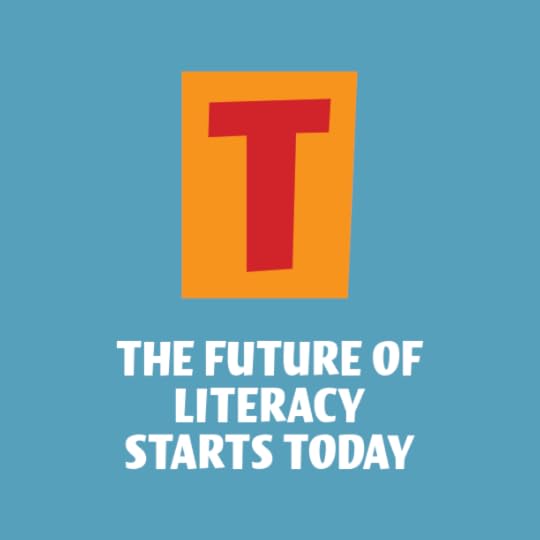
I always knew that I would find my calling among books. From my childhood bicycle trips straight across town to fill up a bag at the local library, to the constant book in my hands asking for my attention, the nights spent reading under the covers after my lights should have been out. Books seem like they have always been a constant in my journey and now, as a literacy teacher, I feel like I have come home.
Right now is an exciting time to be doing anything with reading and writing. With new technology bringing the world into our classrooms, amazing books being churned out daily, and the incredible amount of knowledge that exists a few clicks away, it is an exciting time to be a book lover and a literacy teacher at the same time. It appears that now may just be the very best time to look ahead, to predict what is coming, and to cherish what we have right now. So I think the future of literacy will center around 5 themes that all very much interconnect to provide us with an even bigger opportunity to create passionate learning environments.
Theme 1: Global Collaboration. I have to start with something that is so near and dear to my heart; global collaboration within our literacy programs. Students are no longer limited to contained experiences within our classrooms but can instead read aloud with the world, create products to share with others, create awareness, or simply work on a project with a classroom across the globe. Teachers in isolated locations can still be part of a global collaborative network using whichever tools they have access to. Why does this matter? Because we are teaching generations of children who need to function within a world that is truly at their fingertips at all times. No longer is group work contained to just being able to work with kids from their own community, but instead it can focus on developing skills needed to be an international citizen.
Theme 2: Meaningful Technology Integration. For a long time I struggled with good integration of technology into my literacy instruction but I have found now that a few tools support the instruction in our classroom in a way that wasn’t possible before. So tools that allow students to read in a multitude of ways like e-readers are embraced, although print books are not ignored We use apps on our devices to not just record what we read, but suggest, review, and ask questions about our reading. Writing can occur both traditionally or in electronic format depending on the purpose, as well as the audience, and the process desired. Literacy researchers, experts, and other professionals can be accessed via social media allowing us to have constant professional development. And students can connect with other readers around the world, as well as authors and content experts. We truly live in a time where technology is enriching our literacy classrooms, not just creating more work for us.
Theme 3: Student Voice and Choice. This has for too long been limited to what we allowed students to tell us, but with visionary leaders like Donalyn Miller and passionate literacy teachers across the globe paving the way; our students voices are finally beginning to be heard! This means that creating rich literacy environments start with the needs and desires of the students. No longer are their voices dismissed when it comes to reading choice, reading style, and also product creation, but instead their ideas are embraced, enhanced, and placed into curriculum when possible. Why does this matter? Because our students have for too long become disenfranchised due to teachers telling them what to read, what to talk about, and dismissing their desires. In the future of literacy, student voice and choice will take its rightful place alongside the amazing literacy research we have access to that drives our instruction.
Theme 4: Authentic Purpose and Audience. Students should no longer be creating just for the teacher or for the class, instead the use of technology allows us not only to have a “real” audience, but also to create products that have an impact. Student words can change the world around them and so teachers are finding ways to use their literacy programs to create a real change, rather than create for fictitious purposes. Simple tools such as Skype, Kidblog, or WriteAbout means that students no longer create in a vacuum but instead can get authentic responses and feedback on their work, thus allowing them to be “real” creators. Students no longer have to wait for when they leave school to have an impact on the outside world, we can use the tools we have to do so right away.
Theme 5: Teaching the Students You Have. This one may seem crazy, but what I mean is that we are taking the curricula that districts are purchasing for us and adapting it to fit the needs of our students, rather than assume that the program will fit all of our children. This is powerful because I do not teach the same students as Lucy Calkins, Kylene Beers, Kelly Gallagher or any of the other great literacy experts. I teach my students, and those students change every year, which means that the way I use our curriculum has to change as well. More and more districts are seeing the need for some type of personalization so that all student needs’ can be met. It used to be just teachers doing what they felt students needed, and oftentimes hiding the fact that they were personalizing it, but now there seems to be an upswing in letting teachers adapt program and being proud of it!
The future of literacy depends on us. We are told that the kids aren’t reading, the kids aren’t writing, and some kids don’t even want to come to school. It is up to us to create real change. It is to us to make the future come alive now, not wait and hope for someone else to lead the way. The future starts today.
Hat-tip to John Spencer for this post
I am a passionate teacher in Oregon, Wisconsin, USA but originally from Denmark, who has taught 4th, 5th, and 7th grade. Proud techy geek, and mass consumer of incredible books. Creator of the Global Read Aloud Project , Co-founder of EdCamp MadWI , and believer in all children. The second edition of my first book “Passionate Learners – How to Engage and Empower Your Students” is available for pre-order now. Second book “Empowered Schools, Empowered Students – Creating Connected and Invested Learners” is out now from Corwin Press. Join our Passionate Learners community on Facebook and follow me on Twitter @PernilleRipp.
Filed under: being a teacher, global, Reading, students


My Biggest Lesson Yet
I started this blog with a need to reflect on everything I was doing wrong in my classroom. I needed to process how I had gotten so lost on my journey to become a better teacher. I needed a space where I could put it all out there so that my poor husband didn’t have to listen to any more of my long rambling talks about everything that was wrong in education and everything that was wrong in my own classroom. I wasn’t connected at that time so this blog became my lifeline.
Much like this blog I have grown, I have tried, failed, created, invented, and certainly put it all out there, the good and the bad. So this morning, when I woke up and realized that this little blog celebrates 5 years today, I had to check my math. 5 years? Really? How did that happen? And how have I had that much to write?
It used to be that I would go to professional development and leave so inspired, I couldn’t wait to try all of these new ideas on my students. Those experts that taught us knew so much and surely knew how I would become better. And they did, and I did, but I never grew as much as when I started to learn from my own students.
5 years ago I asked myself if I would want to be a student in my own classroom? When my answer was no, I knew I had to change. Now, I spend most of my days asking my students how to change the way we learn, how to change way I teach. These small check-ins along the way means that I get a new chance to become better all the time. So the biggest lesson I have learned is that you have to ask the students. You have to ask them how to teach them better, what you should change, how they would like to grow.
So if I can pass on any wisdom that I have learned in the past 5 years, it is to ask your students. I know I have said it before, but they are right there. They are waiting to tell you how to change. All you have to do is ask. And then listen. And then do. That is the best professional development one could ever ask for.
Happy 5 years to this blog and than k you for being a part of my journey.
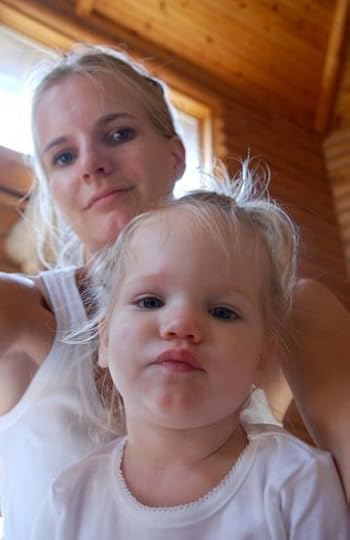 5 years ago, I had one child but other than that I look a lot like I do now. Crazy to think how much has changed, even if my looks haven’t.
5 years ago, I had one child but other than that I look a lot like I do now. Crazy to think how much has changed, even if my looks haven’t.I am a passionate teacher in Oregon, Wisconsin, USA but originally from Denmark, who has taught 4th, 5th, and 7th grade. Proud techy geek, and mass consumer of incredible books. Creator of the Global Read Aloud Project , Co-founder of EdCamp MadWI , and believer in all children. The second edition of my first book “Passionate Learners – How to Engage and Empower Your Students” is available for pre-order now. Second book “Empowered Schools, Empowered Students – Creating Connected and Invested Learners” is out now from Corwin Press. Join our Passionate Learners community on Facebook and follow me on Twitter @PernilleRipp.
Filed under: being a teacher, being me, student voice


June 22, 2015
Your Best Tips for #ISTE2015?
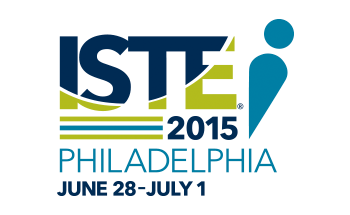
For five years I have watched ISTE from afar, always hoping that I would get to go some day. I have watched the Twitter feed, the Facebook posts, and had the conversations with some of the lucky ones that went. And every year to no fail there is a story of failed expectations, of something that didn’t got to plan. Well, seeing that I finally get to this year, I figured I better ask. What are the hidden rules of ISTE, or really any other major conference? What do people expect? What should I know to make sure that I not only have a great time, but that I also don’t do some sort of faux pas sure to upset others?
Also, what are your best tips? How do you make the most out of this experience? I would love to know your thoughts.
PS: Where will I be? Well here you are:
Sunday:
ISTE Townhall Lead & Transform Panel – Sunday, June 28th 9 AM to 11:30 AM. I am honored to be the teacher representative on this panel where we get to discuss how we are changing professional learning in our communities. The best part of the panel is that I get to listen to he amazing students from SLA, who will start the discussion!
ISTE Ignite – Sunday, June 28th 1:30 PM to 3 PM. I have dreamed of doing an Ignite for several years and what better place to try it than at ISTE. I don’t know whether I am more excited to speak about having courage to create passionate learning environments or listen to the other Ignite presenters!
Monday:
Monday morning – Award breakfast where the Global Read Aloud and I will be honored with the ISTE Innovation in Global Collaboration Award.
Monday lunch – The ISTE Making IT Happen award luncheon.
Personalized Learning Panel: Stories, Process and Models – Monday, June 29th 4:15 – 5:15 PM. Very excited to get to represent my district, Oregon School District, on this panel with the amazing Barbara Bray and Kathleen McClasky and others.
Tuesday:
Set Their Voices Free: How Students Can Share Their Stories – Tuesday, June 30th 10:45 AM to 11: 45 AM. I am pumped to be presenting on this topic and with these people; Erin Klein and Colby Sharp. We started planning this session this week and it promises to be hands-on with time to work, discuss, and share ideas. Isn’t that what we all hope to get from a session.
Wednesday:
Corwin Connected Educator Panel – Wednesday, July 1st 8:30 – 9:30 AM. I get to see some of my favorite people and discuss one of my passions; how do we empower students and staff in our schools with my friend and inspiration, Tony Sinanis. What isn’t there to like?
Filed under: being me


June 21, 2015
How I Organize My Books
A question I often get asked is how my books are organized in our classroom. The system is really simple and one that many people use, so I thought I would share here to help others. I have used this system in 4th, 5th and 7th grade but have seen younger grades use this as well. I do not level my classroom library.
I have more than 1,000 books in my library. I am not sure how many exactly but it keeps growing. And so my library is an ever growing work in progress. Book shelves are a mix of what my school graciously purchased for me and ones that I could secrue from family.
Most of my books are organized in bins, I have found this to be the easiest way for students to find books, as well as it being appealing to them. Bins are grouped into several categories, some by genres, some by theme, some by author. Students will suggest new bins as they see fit, for example this year we added a “War” bin and a “Cassandra Clare” bin. I use clear bins like these because they fit all books and provide students with covers that may entice them. For larger books, I use this type of bin since they fit my large books and picture books as well. I also use this size bin as my “Return books here” bin. The bins have stickers on them (address stickers) with the bin name and the abbreviation below it. So a bin might say “Realistic Fiction (RF)” on its sticker. RF is then also the designation that is put inside of the book underneath my stamp.
 Large bins for collections, poetry and others
Large bins for collections, poetry and others Small bins for all of my books, I just remove the lids.
Small bins for all of my books, I just remove the lids.Most of my picture books are simply shelved on one bookcase. Students know that the entire bookcase is dedicated to picture books and put them back as needed. I have decided not to organize by author as it took too much time to keep up with it. As long as they have their own separate bookshelf, I have no problem. All non-fiction texts are also housed on a separate bookshelf and I have slowly started to group those texts together as well. These are mostly grouped by theme and are a work in progress because I need more bookshelf space.
Finally, one of the best things I have ever purchased for my library was a stamp! I purchased this type of stamp 2 years ago and it has been amazing. No more having to write out labels, no more mess. Books are stamped on the inside upper right corner as well as on the closed pages of the books (vertically when the book is closed I stamp it for parents to see my name). I then add then genre or bin abbreviation under the stamp so students know where the book belongs. This stamp has meant many more books have been returned to me and one of the best $6 I ever spent, plus when the ink runs out you just buy a new inkpad, wahoo.
There you have it, a quick peek into the organization of my library, I hope it was helpful.
Filed under: being a teacher, classroom setup, Reading




